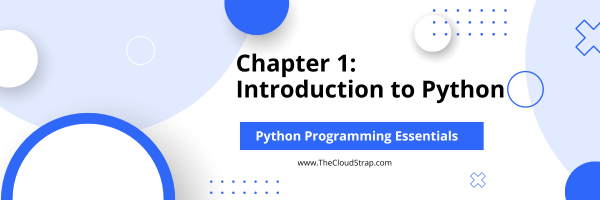
Introduction to Python
Python is not just a type of snake; it’s a powerful, high-level programming language that has earned a reputation for its dynamic semantics and readability. Whether you are a programming novice or an experienced developer, this blog post will help you understand Python’s core facets, its evolution, and how you can set up a Python environment on your computer.
What is Python?
Python is a high-level, interpreted programming language, designed with an emphasis on code readability and simplicity. It provides constructs that enable clear programming on both small and large scales. Python is extremely adaptable and suitable for a wide range of tasks because it supports multiple programming paradigms, including procedural, object-oriented, and functional programming.
Guido van Rossum, a Dutch programmer, created Python during the Christmas holidays in 1989. It was born out of his frustration with the ABC language and the limitations he experienced while working with it. The name ‘Python’ was inspired by the British comedy series “Monty Python’s Flying Circus” – a favorite of van Rossum.
Python is often distinguished by its emphasis on code readability and white space. This makes for a uniquely uncluttered visual layout, often compared to the English language in its simplicity and directness. With Python, developers can express complex ideas and logical procedures with fewer lines of code compared to other languages like C++ or Java. The language is versatile, accommodating a variety of programming paradigms including procedural, object-oriented, and functional programming.
History and Evolution of Python
Since its inception in 1989, Python has undergone significant development. Python 1.0, released in January 1994, introduced several features such as lambda, map, filter, and reduce. Python 2.0, released in October 2000, brought in features like list comprehensions and a garbage collection system capable of collecting reference cycles.
Python 3.0, released in December 2008, was a significant milestone. It was designed to rectify the fundamental flaw of the language. However, it was not backward compatible with Python 2.x. It took a while for Python 3 to be widely adopted due to this lack of backward compatibility. As of my knowledge cutoff in September 2021, the latest version is Python 3.9.5, released in May 2021.
Advantages of Using Python
Python’s popularity and widespread use are due to a number of advantages it offers:
Ease of Learning and Use
Python has a straightforward syntax, which is similar to English. This makes it an ideal language for beginners.
Wide Range of Applications
From web and game development to machine learning and data analysis, Python finds its usage in almost every sphere of software development.
Strong Community Support
Python has a vast, active, and supportive community around the globe. This community ensures continued improvement of the language and provides extensive support through sharing modules, libraries, and frameworks.
Integration Feature
Python is extremely versatile and powerful due to its easy integration with C, C++, and Java languages.
Extensive Libraries
Python has a rich set of libraries and frameworks that help developers execute ideas without coding from scratch.
Setting up a Python Environment
To get started with Python, you need to install it on your computer. The Python environment setup involves downloading and installing the Python software and optionally setting up an IDE (Integrated Development Environment) that suits your needs.
Download and Install Python
Visit the official Python website at www.python.org. Download the latest version of Python suitable for your operating system and install it. During the installation process, make sure to check the box that says “Add Python to PATH” before you click on Install Now. This will set the environment variables, allowing you to run Python from any directory in the Command Prompt.
Setting Up an IDE
While Python does come with a basic IDE known as IDLE, many developers prefer more powerful environments like PyCharm, Jupyter Notebook, or Visual Studio Code. You can download and install the IDE of your choice from their official websites.
Verifying the Installation
To verify the successful installation of Python, open your command prompt or terminal and type “python –version”. It should return the version of Python that you installed.
Because of its convenience, versatility, and extensive variety of choices for engineers, Python is verifiably one of the most generally involved programming dialects in this present reality.
Python is a fantastic decision, so it doesn’t make any difference to add one more language to your stockpile.
This post was published by Admin.
Email: admin@TheCloudStrap.Com
